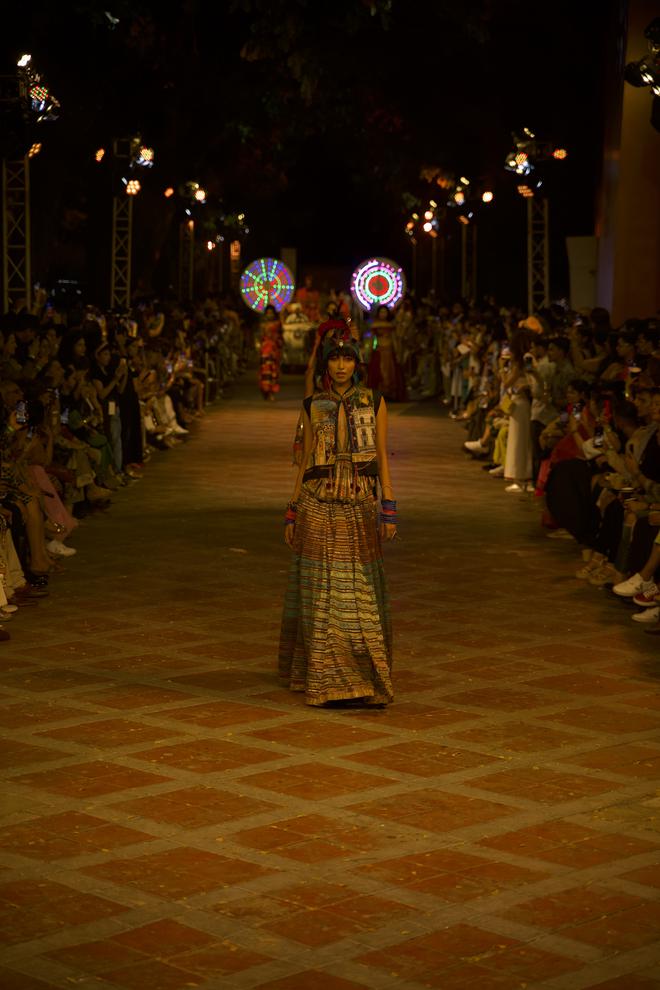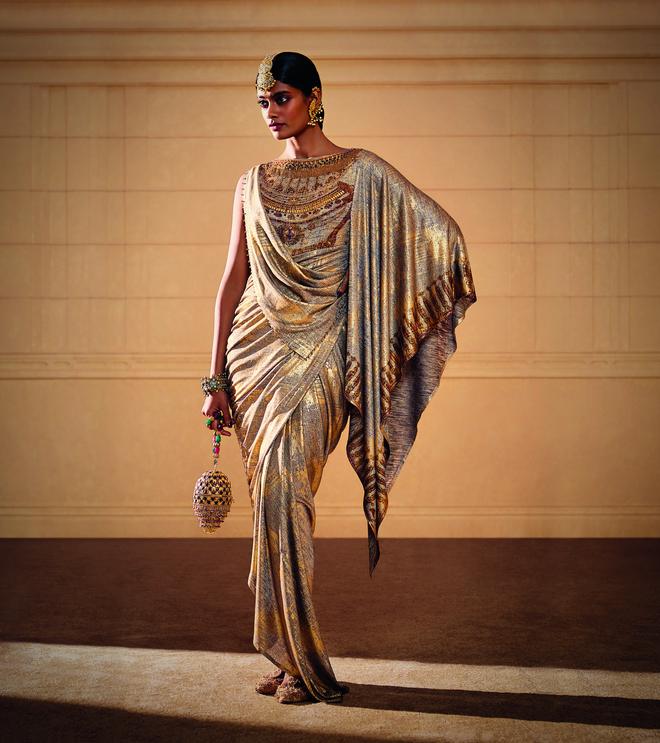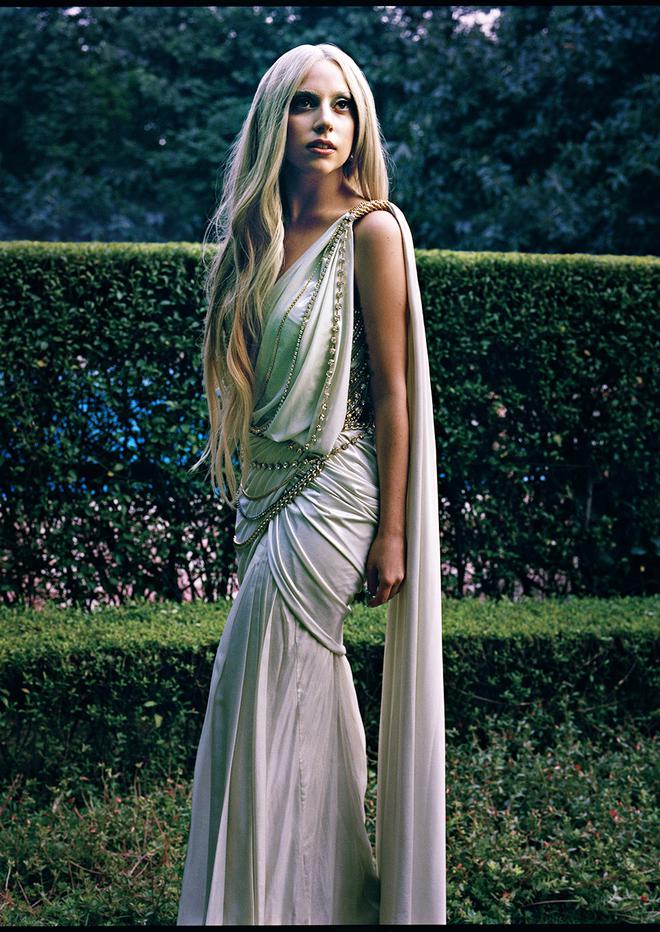Kathakali dancers accompanied a resplendent Mehr Jesia as she sashayed down the runway looking ethereal in a Tarun Tahiliani signature draped form. Lakshmi Rana swirled around in a stunning contemporary rendition of a traditional chikankari lehenga. Locals from Kutch and Kathiawar walked along with models dressed in Tarun’s 2011 Kutch Collection at Mahalaxmi Racecourse in Mumbai recently. In greys, powder blues and sea greens, models sparkled in creations embellished with crystals and stole the show in brocade cape and pant sets even as a procession of folk artists, stilt walkers, life-sized puppets and dhol artists from various regions of India accompanied them during the parade which can only be described as a celebration of modern India.

And a celebration it was, as Tarun unveiled his coffee table book (₹5,999) titled Tarun Tahiliani: Journey to India Modern at a star-studded event at the inaugural edition of Art Mumbai. A deep dive into the designer’s love for fashion, history, culture, craft and the pursuit of a dream called ‘India Modern’, the book juxtaposes the making of his legacy against a historical context of the renaissance of fashion.
A day later, when we catch up with Tarun at his sprawling boutique at Dubash House, he settles down for a quick tete-e-tete, even as a familiar client or two pops by to say hello and an assistant interrupts to ask his opinion on a fashion-related matter. “In the past, a show like this would have meant three days of partying. Last night, after the show, I took some people out for dinner and then I was in bed because I had appointments the next day. I am exhausted but I have things to finish,” he shares.
The book has been put together by journalist and writer Alia Allana, along with essays from fashion journalists such as Nonita Kalra and Sujata Assomull. Sneha Pamneja’s design ensures that the chapters divided across Tahiliani’s formative years, his introduction to the world of fashion, techniques and collections over the years get the space they deserve to showcase his oeuvre. In her foreword, Fern Mallis, Former Executive Director, Council of Fashion Designers in America, describes Tarun as India’s Valentino with a touch of Bob Mackie. “Tahiliani is a proud ambassador of his country’s history and culture, which is evident in his creations,” she writes about TT, as he is fondly called. The 300-page deep dive takes the reader into the designer’s journey which was perhaps a result of many things, as the book suggests, including ‘Visions of his mother in resplendent saris and her encapsulation of a modernity in the late 1960s, the habits of the nuns from his school, and the attire of Koli fisherwomen in Bombay’.

Although he had no interest in it, Tarun studied business management at Wharton School of Business in the USA, just to keep his parents happy. Meeting his future wife Sailaja ‘Sal’ Tahiliani was perhaps the best thing to come out of that. Selling oil field equipment back in India did not bring him any happiness, nor much money. “We were broke; my wife was modelling to help pay the bills. I was a good Sindhi; I sold oil field equipment in the day and worked on fashion in the evening,” he laughs, recalling the heady days which led them to open the doors to Ensemble, India’s first multi-designer store in 1987. “Till then, we had not really heard of fashion. It was all about the textile industry here. As India was changing, we were sub-consciously answering a need,” he says.
“Very early on, I asked what my role would be, and I realised it would be the preservation of culture,” says Tarun in the book. From opening Ensemble to his first solo show in London in 1994 to being the first Indian designer to show at Milan in 2004 and his numerous collections over the years, it is his penchant for paying respect to our heritage but updating them to suit changing realities which has been the mainstay of his creations. “I am interested in the modern fit; in the lightness – today at a sangeet, you want to dance for five hours. You cannot dance in a 30 kg lehenga, so it has to evolve and move with the times or it becomes just a costume. That is a huge consideration for me,” says the 61-year-old, who believes there is relevance when one does quality work. “My education and my exposure into the world of crafts is helping me bridge walls. I am trying to take the Indianness and give you an international fit. For me, relevance is moving with the times and I am obsessed with that,” he says.

In November next year, the Asian Civilisations Museum is holding a first-of-its-kind showcase of Tarun’s creations from over the years, which is huge for him. “The book is here and now there is going to be a story on the architecture of Indian fashion. We are putting drapes and sculptures together to show how the past is coming into the present,” he says, adding that while the museum has chosen a number of pieces from his archives, he is keen on giving them some new ones as well. “I am not here to just run a business. I am here to go to work and do things that satisfy me creatively. If money was all I wanted, I would have still been selling oil equipment. I dare say I would have made a lot more money there!” he guffaws.







